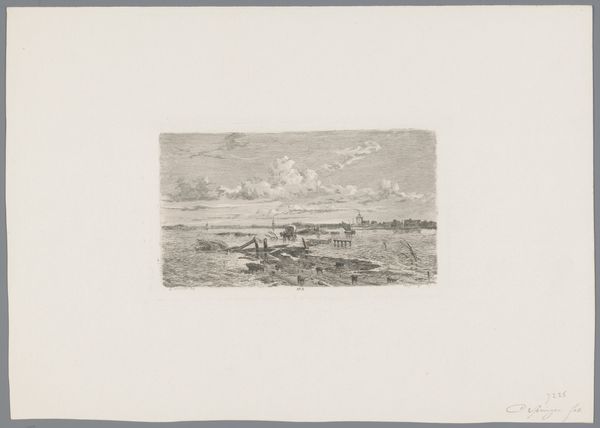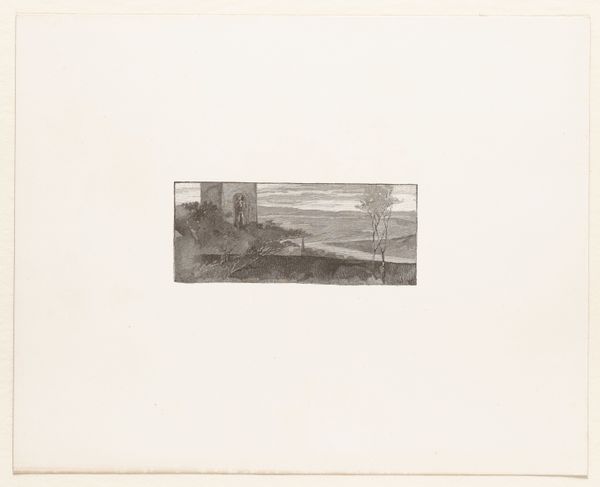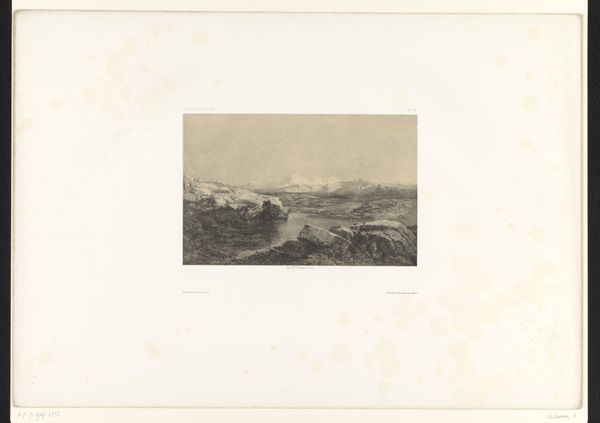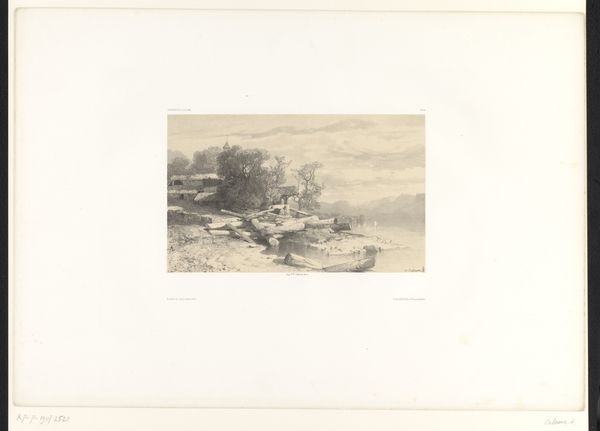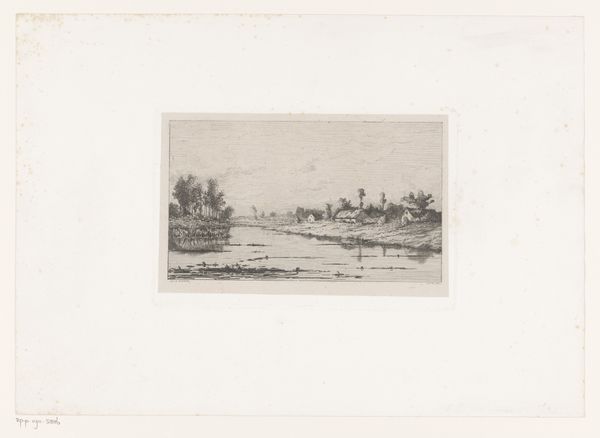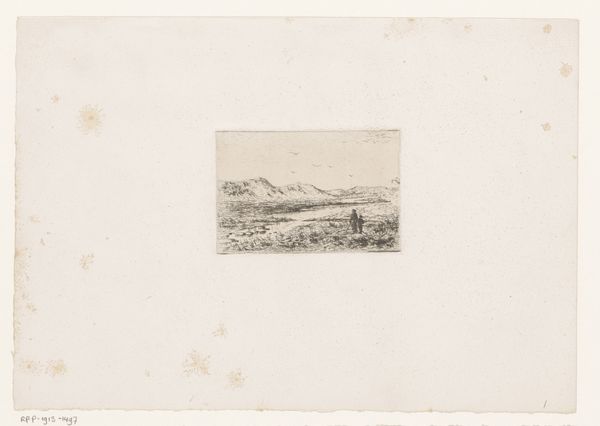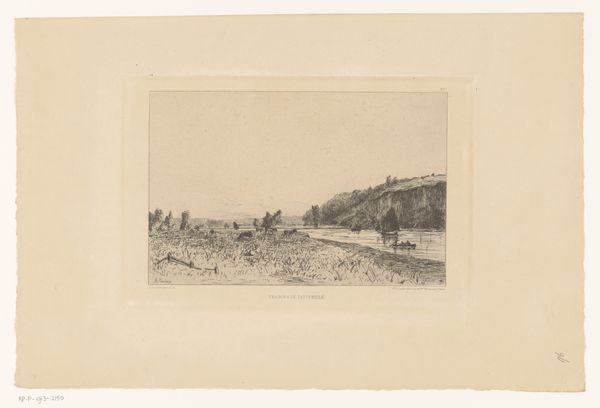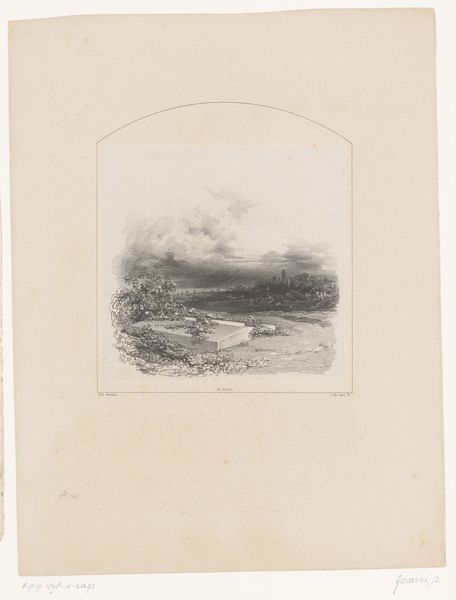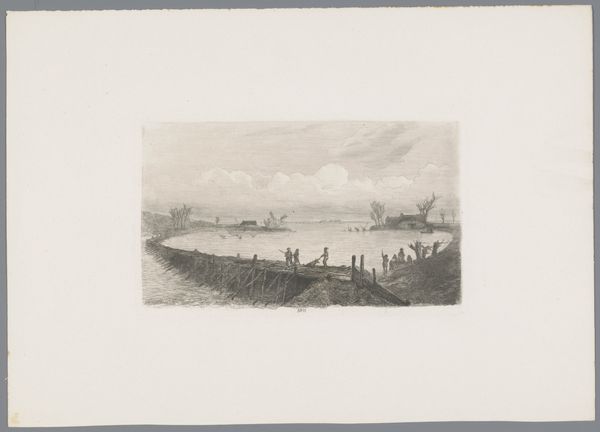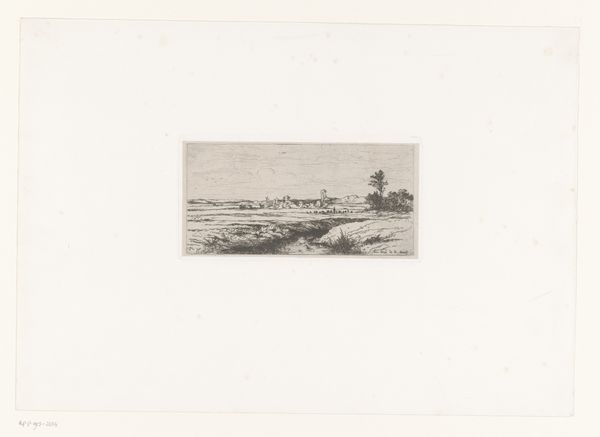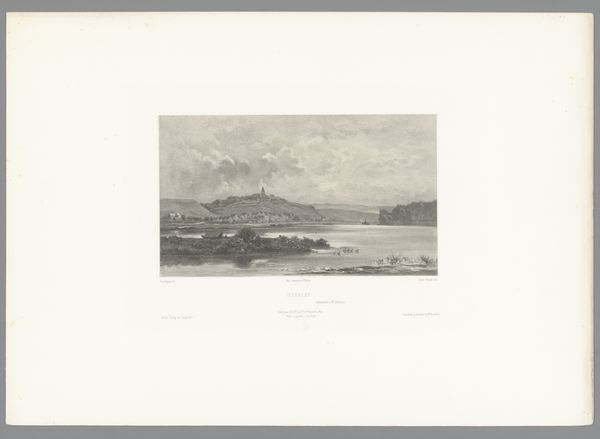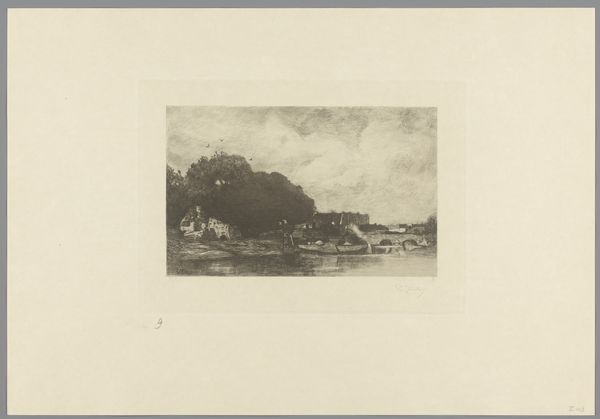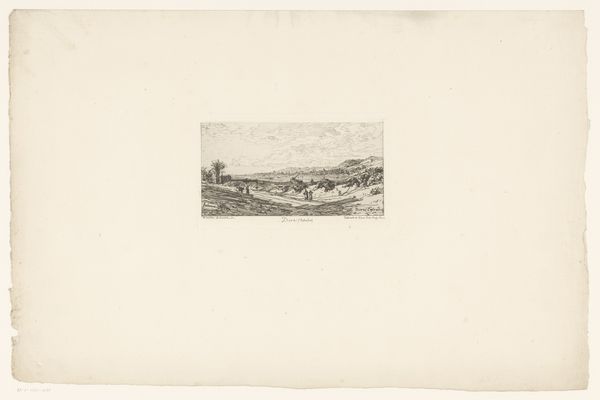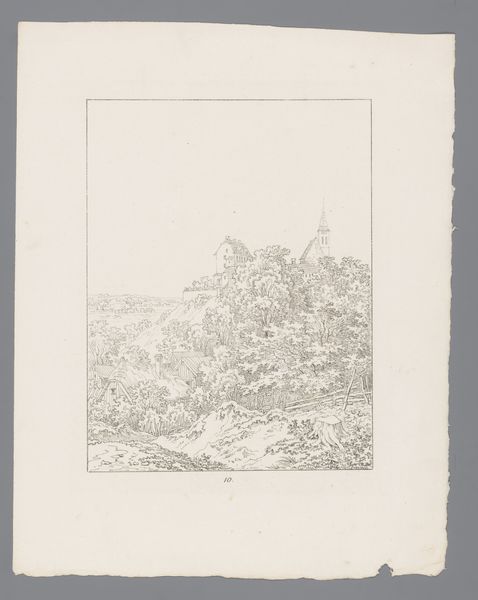
The Dawn, plate fourteen from Le Long de la Seine et des Boulevards Possibly 1890 - 1910
0:00
0:00
Dimensions: 101 × 121 mm (image); 230 × 200 mm (sheet)
Copyright: Public Domain
Curator: This is "The Dawn, plate fourteen from Le Long de la Seine et des Boulevards," possibly created between 1890 and 1910 by Auguste-Louis Lepère. It is an etching and engraving on paper. Editor: Immediately, the intricacy of the linework strikes me. It’s almost chaotic in its density, yet it resolves into a coherent image of urban bustle under what I perceive as a hesitant, grey dawn. Curator: Yes, Lepère's skill is undeniable. The composition draws the eye along the Seine, from the bustling foreground to the distant Eiffel Tower, cleverly using the waterway to structure the visual field. The various textures, achieved through distinct engraving and etching techniques, evoke the atmosphere of a waking city. Editor: Do you feel, though, that the impressionistic rendering softens what could have been a more critical view of burgeoning industrialism and tourism of the period? Curator: Perhaps. We can also see how the “Grand Titre” signage gives away a visual reminder of the period when commercial ventures made inroads into art-making by artists such as Lepère to produce reproducible prints to appeal to mass consumers. Lepère does lean heavily on evoking feeling. It lacks the sharp political edge you might find in a Daumier lithograph from earlier in the century. The artist, rather, invites the viewer into the experience of modernity, capturing the ephemerality of light and atmosphere through varied mark-making. It celebrates Paris, no question, even while hinting at the dizzying changes reshaping its fabric. Editor: True. While it sidesteps blatant critique, the artist implicitly comments on the accelerated pace of urban life by packing the frame with such visual stimulation. One can feel overwhelmed. The dawn, meant to represent new beginnings, is swallowed by the sheer amount of visual data here. Curator: Exactly. What seems picturesque contains undertones about how one processes the urban world during industrial modernity, which Lepère seems keen on exploring and expressing. Editor: Reflecting on Lepère's technique and composition, it is how the artist brings viewers like us to actively complete this early impression, this "Dawn," that appeals to me. Curator: And seeing it from the standpoint of how it illuminates aspects of a modern, consumer-driven culture, gives us greater insights and helps in the contextualizing process.
Comments
No comments
Be the first to comment and join the conversation on the ultimate creative platform.
